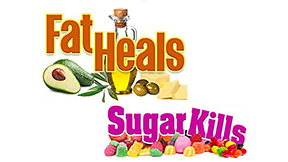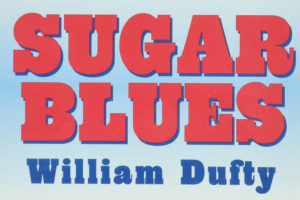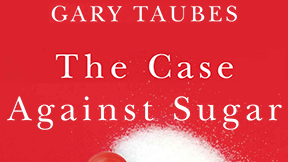 by Dr. Bruce Fife
by Dr. Bruce Fife
Review of Chapter 3
Dr. Fife outlined the sordid history of Ancel Keys’ fraudulent research which attempted to pin the blame for the increasing rates of heart illness on dietary fat, particularly saturated fat. A British researcher, Dr. John Yudkin, pointed the blame for heart disease on the dramatically increased amount of sugar in Western diets. Ancel Keys along with his sugar industry promoters vilified Yudkin to the point that Keys’ diet-heart-hypothesis, also known as the lipid or cholesterol hypothesis, linking dietary saturated fat to heart disease, gained traction and was generally accepted as true for over a half of a century.
Chapter 4, Part 1
Carbohydrate is Sugar
The primary purpose of carbohydrates is to produce energy. Fats and protein serve as building blocks in our bodies, although they can be used to provide energy. Carbs are mainly derived from plant foods, diary being the exception.
The carbs we’ll look at are glucose, fructose, and galactose (aka lactose). Fiber is also a carb, but humans do not have the enzymes to digest it. Plants with the highest amount of carbs are legumes, grains, and tubers. The latter are carrots, potatoes, parsnips, etc. Refined carbs such as white flour have been stripped of most of their fiber, fat, protein, vitamins, and minerals. When digested, these refined carbs, also known as starch, are broken down into glucose.
Our blood sugar refers to the amount of glucose in our blood. For our bodies to operate efficiently, we need to have the proper level of blood sugar. From WebMD:
Normal blood sugar levels are less than 100 mg/dL after not eating (fasting) for at least eight hours. And they’re less than 140 mg/dL two hours after eating.
During the day, levels tend to be at their lowest just before meals. For most people without diabetes, blood sugar levels before meals hover around 70 to 80 mg/dL. For some people, 60 is normal; for others, 90 is the norm.
Blood sugar is not the problem; it is the over consumption of sugar that is the problem.
My Comment: What is over consumption? Some dietary experts hold the line at about 100 calories of sugar per day. Considering that a 12-ounce can of sugar-sweetened soda pop runs around 140-150 calories, it’s really easy to exceed those limits. For sugar addicts, those limits are hopelessly too low and are usually ignored.
Continuing: Fife points out that just as alcohol can be addictive, sugar can likewise be addictive. The problem with refined carbs is that the milling process, which has stripped everything away but the starch, concentrates the starch. This in turn, allows the starch to be digested much more quickly, and that results in a too rapid of an increase in blood sugar levels.
Me Comments: So you try to be a smart shopper and purchase bread labeled as “Whole Wheat.” Unfortunately, just as there are so many other “Fake” things in life, there is also fake whole wheat bread. Let’s look at some ingredients lists from several so-called “whole grain” breads. As you will see, many of these so-called whole grain breads list unbleached, enriched flour as their first ingredient.
Look at the second list of ingredients from a bread wrapper. For the benefit of those reading this article on their mobile devices, I’ll list the ingredients here: INGREDIENTS: UNBLEACHED ENRICHED FLOUR (WHEAT FLOUR, NIACIN, REDUCED IRON, THIAMINE MONONITRATGE {VITAMIN B1}, RIBOFLAVIN {VITAMIN B2}, FOLIC ACID, WHOLE GRAIN WHEAT FLOUR, SOYBEAN OIL, SUGAR, PARTIALLY HYDROGENATED COTTONSEED OIL, LEAVENING (CALCIUM PHOSPHATE AND/OR BAKING SODA), SALT, HIGH FRUCTOSE CORN SYRUP, SOY LECITHIN.
Wow, that list has problem sirens are going off all over the place.
1) This is primarily white bread, but they throw in some whole wheat flour to make their claim to fame…whole grain. Notice the label: “Baked with Whole Wheat”
2) There are two sugar listings: sugar and high fructose corn syrup.
3) They also use two of the unhealthiest oils on the planet, soybean oil and partially hydrogenated cottonseed oil.
4) This is a classic SORF product made from three cheap ingredients.
- Sugar
- Oils (Highly processed oils derived from seeds
- Refined Flour
The food industry manufactures hundreds and hundreds of “foods” made from these three, cheap ingredients.
By contrast, Ezekiel 4:9 bread has the following for its ingredients: INGREDIENTS: ORGANIC SPROUTED WHEAT, FILTERED WATER, ORGANIC SPROUTED BARLEY, ORGANIC SPROUTED MILLET, ORGANIC MALTED BARLEY, ORGANIC SPROUTED LENTILS, ORGANIC SPROUTED SOYBEANS, ORGANIC SPROUTED SPELT, FRESH YEAST, ORGNAIC WHEAT GLUTEN, SEA SALT
That’s quite a contract to the above fake, whole wheat bread. Here is a worthwhile quote from the article:
According to Food For Life, the glycemic index of Ezekiel bread is only 36. That’s half the reading for normal white bread, which is 70. Not even 100% whole grain [bread] can compare, as its GI is 62
Not only is the lower glycemic number better for diabetics, it’s better for everyone.
Sugar Overload
Continuing: Fife points out that the food industry puts an immense effort in putting just the right amount of sugar into their products to make them either sweet or savory.
The reason sugar is so pervasive in processed foods is due to the work or Howard Moskowitz, PhD, an American marketing researcher and psycho-physicist.* In the 1970s he was assigned the task of maximizing the appeal or Dr. Pepper. He tested 61 levels of sweetness to find the optimum level of sweetness to guarantee the new soda would fly off the shelf. This level is called the bliss point. It is at this point at which the sweetness is the most desirable, sweet enough but not too sweet.
The bliss point was first used in the formulation of soda, but is now used in all types of products—pasta sauce, cereals, tomato soup, bread, and so on. An unfortunate consequence of putting sugar in everything is that people to expect everything to have a slightly sweet taste. A generation of children has grown up eating foods sweetened to the bliss point. By comparison, foods such as vegetables, have become unappealing. *The branch of psychology that deals with the relationship between physical stimuli and sensory response.
Sugar in foods, sweets, and snack foods has created a nation of sugar addicts. Sugar is so addictive that some people admit they can’t live without it. Ed: My emphasis.
My comments: Volumes and volumes could be written concerning the above paragraphs. Dr. Fife said it in a minimum of words: …a nation of sugar addicts. A result of this addiction is that we now have a national pandemic of adult-onset, type 2 diabetes. Sadly, this isn’t just occurring in adults, either.
Primitive peoples who don’t have the luxury of our modern, processed foods have an absence of type 2 diabetes, obesity, and heart disease. There surely must be a cause-and-effect relationship!
Continuing: Dr. Fife reminds us that the sugar culture is a modern phenomenon. Prior to the 1960s, sugar was used in desserts and sweets. Nowadays, it’s a staple. Sugar consumption worldwide has tripled in the last 50 years, and most of this is in the form of hidden sugar.
Sugar is found in hundreds of processed foods such as bread and most baked goods, breakfast cereals, catsup and barbecue sauce, peanut butter, spaghetti sauce, canned goods, and frozen foods.
My comment: Years ago, a cook at a school cafeteria told me that when she started adding corn syrup to the peanut butter, the kids liked it better than unsweetened peanut butter. She was contributing to training the kids to like things sweet.
Continuing: Fife lists various sources of sugar founds in processed foods: agave, barley malt, brown rice syrup, brown sugar, coconut sugar, corn syrup, date sugar, dextrin, dextrose, fructose, fruit juice, glucose, high fructose corn syrup, honey, lactose, levulose, maltodextrin, maltose, maple syrup, molasses, nonfat dry milk, palm sugar, saccharose, skimmed milk powder, sorghum, sucrose, treacle, and turbinado.
The ingredients list on food packaging lists the ingredients most predominant by weight. Some labels can list multiple sugars as you go through the list of ingredients.
My comments: Have you noticed that the ingredient lists on food packaging are usually spelled out in upper case letters? Additionally, they are often scrunched together in a condensed font. Worse, in many instances the contrast between the font color and the background is indistinct. An example is black letters on a red background. Elsewhere on the packaging, such as the nutrition information, things are much more readable. I think the most logical answer is to make it more difficult for the consumer to read the lists. Apparently, the manufacturers do not have the same requirements for the ingredient listings as they do elsewhere on the labeling. Please click here for a more complete explanation of food labeling requirements.
Continuing: Fife says the U.S. Dept. of Agriculture recommends limiting your daily sugar intake to no more than 8 teaspoons for the average adult. That’s about 128 calories. One 12 ounce can of sugar soda pop will put a person over the limit.
He reminds the reader that “natural sugars” such as fruit juice concentrate and agave nectar are no better than refined sucrose. Dr. Fife next segues into a discussion of the various types of sugars.
Sucrose
Sucrose is better known as white, table sugar. It is highly processed. Dr. Fife states that the only advantage of so-called “natural sugars” is that they might retain some nutritional value, but it isn’t much. He makes the point that so-called natural sugars such as Agave nectar or syrup are still sugar.
Glucose
Blood Sugar and Insulin Resistance
Digestible carbs are broken down and converted into glucose. The glucose is picked up by our bodies’ cells and transformed into energy. But first, the hormone insulin unlocks the doors to the cells and allows the glucose in. If the insulin was not present, glucose could not pass into our cells.
If cells don’t get enough glucose on a steady basis, they degenerate and die. On the other hand, too much glucose is toxic and can lead to mental confusion, coma, and death. Aren’t we fortunate that our bodies have a feed back mechanism to maintain our blood sugar (glucose) within a narrow range?
The way our bodies self-regulate is quite remarkable. The pancreas secretes insulin as blood sugar rises. As insulin shuttles glucose into the cells, blood sugar levels drop. Another signal tells the pancreas to stop producing insulin.
If blood sugar levels fall too low, then another signal triggers the pancreas to release another hormone, glucagon. Glucagon helps to release stored glucose from the liver. Our bodies have the ability to maintain blood sugar levels in a fairly tight range.
Refined carbohydrates whether they be some form of sugar or refined starches such as white flour, will quickly elevate blood sugar levels. The bran, fat, and protein in whole grains slows down the digestive process, which mitigates this problem.
If you eat high carb meals, snack on high carb foods such as donuts or cookies, and/or use a sweetener in your coffee, you will keep your insulin levels elevated throughout the day. That’s bad.
Dr. Fife reminds us that we can become desensitized to a variety of stimuli. For example, if we are in a room with an odor, after a while we don’t notice the odor anymore.
Chronic exposure to high insulin levels desensitizes the cells, and they become unresponsive or resistant to the action of insulin. This is referred to as insulin resistance. In order to move insulin into the cells, a higher-than-normal concentration of insulin is needed, which puts more strain on the pancreas to produce more of the hormone. Insulin resistance is the hallmark feature and first step toward developing diabetes.
End of Part 1. Please continue with Part 2 in this issue.
 We continue our review and digest this month of Fat Heals-Sugar Kills: The Cause of and Cure for Cardiovascular Disease, Diabetes, Obesity, and Other Metabolic Disorders by Dr. Bruce Fife. In the first part of Chapter 4 titled Sugar Isn’t Always Sweet, Dr. Fife stresses the point that sugar is sugar whether is be table sugar, fructose, agave, honey or any other of the myriad forms of sugar.
We continue our review and digest this month of Fat Heals-Sugar Kills: The Cause of and Cure for Cardiovascular Disease, Diabetes, Obesity, and Other Metabolic Disorders by Dr. Bruce Fife. In the first part of Chapter 4 titled Sugar Isn’t Always Sweet, Dr. Fife stresses the point that sugar is sugar whether is be table sugar, fructose, agave, honey or any other of the myriad forms of sugar. Seven years ago, we initiated our review and digest of William Dufty’s book, Sugar Blues. His account of his sugar addition is timeless as the problem of sugar addiction continues unabated. We have revised our original summary and digest of his Chapter 1 titled: It Is Necessary to be Personal.
Seven years ago, we initiated our review and digest of William Dufty’s book, Sugar Blues. His account of his sugar addition is timeless as the problem of sugar addiction continues unabated. We have revised our original summary and digest of his Chapter 1 titled: It Is Necessary to be Personal. Gary Taubes, a well-known scientific journalist and author, published on YouTube a speech of his titled: The Case Against Sugar. We have republished our original transcription of the first segment of his speech with updated comments. His talk is just as appropriate today as it was a few years ago.
Gary Taubes, a well-known scientific journalist and author, published on YouTube a speech of his titled: The Case Against Sugar. We have republished our original transcription of the first segment of his speech with updated comments. His talk is just as appropriate today as it was a few years ago. Starting in 2021 there is a new program for Medicare beneficiaries that use insulin. I have pulled
Starting in 2021 there is a new program for Medicare beneficiaries that use insulin. I have pulled  In early October you should have received your Annual Notice of Change (ANOC) from either your Part D prescription (PDP) plan provider or your Medicare advantage plan company. If you didn’t receive your ANOC, be sure to contact your plan and ask for one. They should also be available online.
In early October you should have received your Annual Notice of Change (ANOC) from either your Part D prescription (PDP) plan provider or your Medicare advantage plan company. If you didn’t receive your ANOC, be sure to contact your plan and ask for one. They should also be available online.